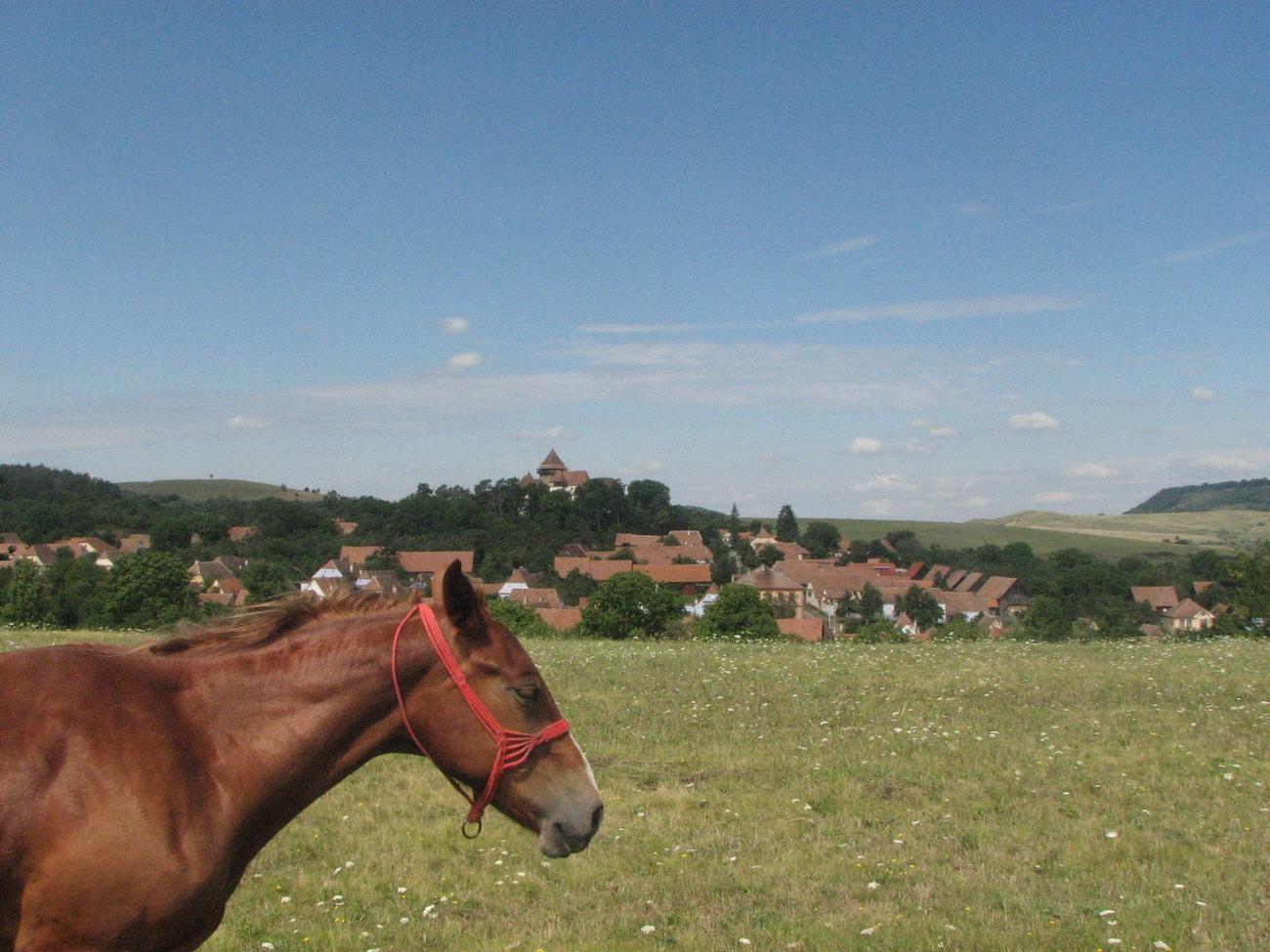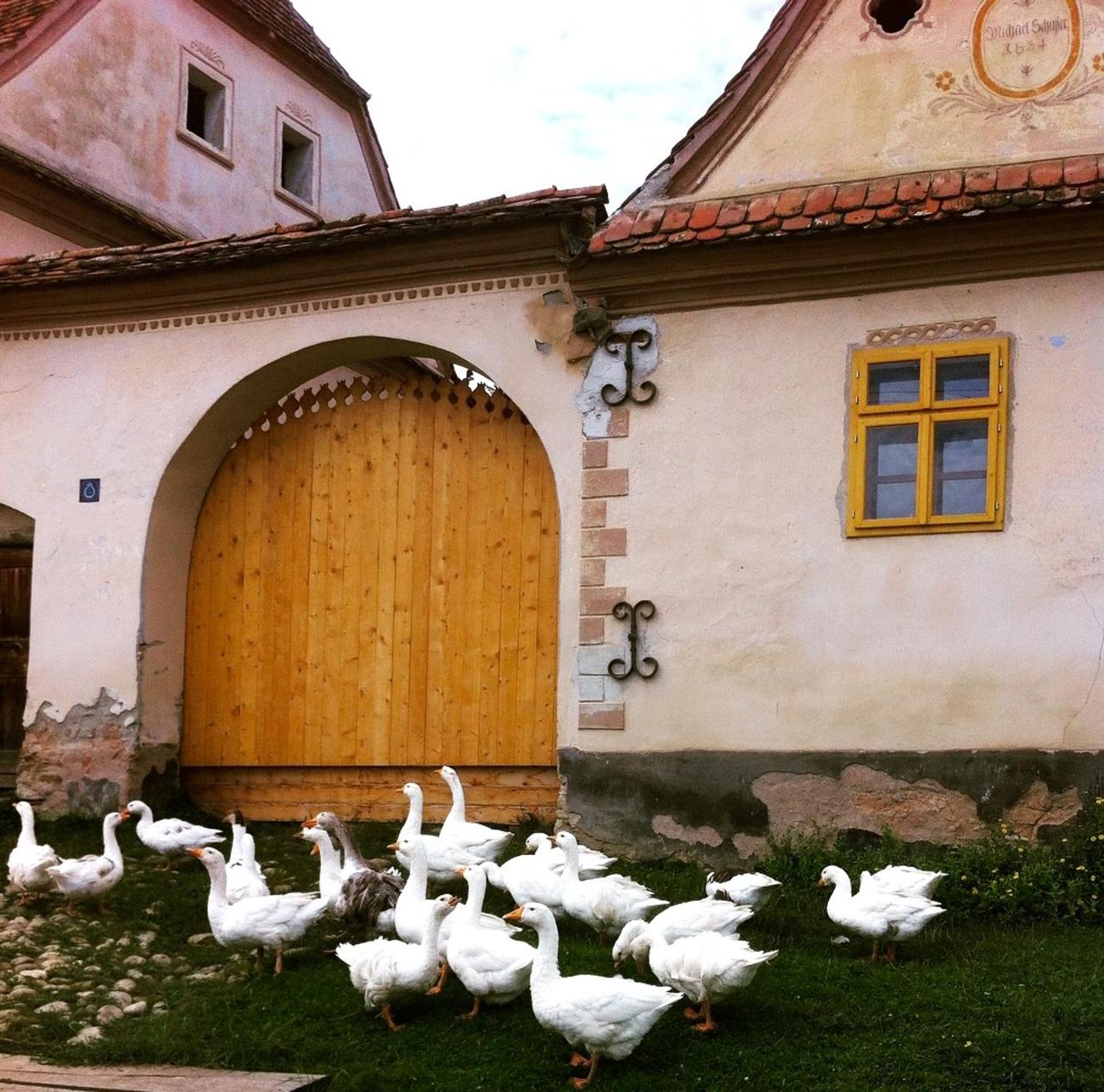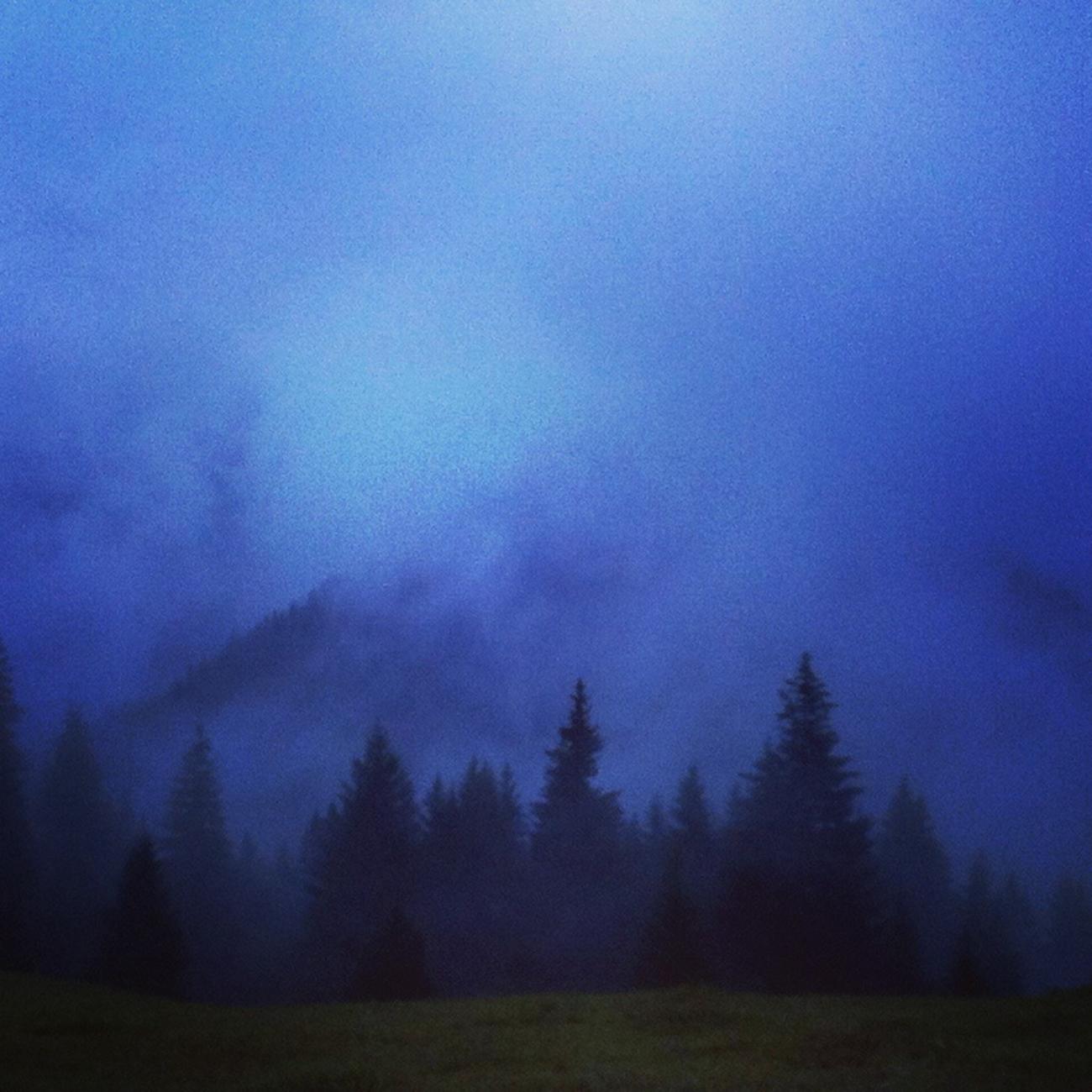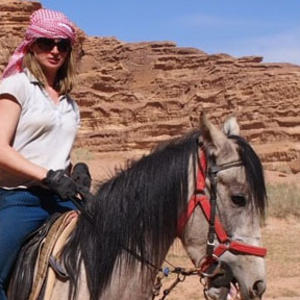Tour leader Cally Savage led our Walking in Romania: Along the Enchanted Way group tour in August. Below Cally recounts her experience of enjoying local life in the Saxon village of Viscri.
Waking up I hear the sound of a gaggle of geese wandering outside my bedroom window, turkeys and chickens pecking in the dust, bells ringing from the necks of cows as the farmers bring them up into the high pastures for their daily graze and horse and carts clip clopping down the path delivering the morning milk in churns. I breathe it all in, feel the return of the sun on my face and look forward excitedly to our horse and cart tour around Viscri.

Our steeds Deeann and Angela set the pace as we leave the village behind and head towards the rolling hills. There are 493 people in total living in the village – 278 Roma gypsies, 178 Romanians, 2 Magyarians and 35 Saxons, all working together to help restore this special village that was abandoned by the Saxon population and went into disarray during World War Two and the Communist era. Viscri is also close to Prince Charles' heart; he visits once a year and has set up a trust to help with the restoration work, preservation of rural life and traditional Saxon craftsmanship.
Our first stop in witnessing daily village life is the Roma family business in traditional brick making and tiles. They normally work to order and it takes approximately three weeks to dry a brick, which includes ten days and nights in a special oven. This business in itself is special as the gypsies here do not receive any state funding and are the sole providers of this product in the area. NGOs assist other smaller enterprises in the village including traditional blacksmith methods, felt slipper making and producing local jams. Its aim is to be a fully self-sufficient village, providing work for all inhabitants and plans are afoot to set up a dairy co-operative.
Our next stop is with the local bread baker. Traditionally bread is baked on a Saturday and lasts all week. Thirty loaves of bread can fit into the oven and are left there for two hours until black and then brought outside and placed on a crate to dry for ten minutes before being banged to remove the black outer crust. We tried some of this freshly baked wheat-based bread and, although there were eight of us, we barely left our mark on this loaf – a good indication of how long it could feed a family.

The slower pace of life here, in tune with the seasons and the environment is like time travelling back to a place that I have never fully experienced, being a city-born girl who only moved to the sticks as an adult. It is a rural way of life where the food still tastes as it should, animals roam freely knowing where to return home, people work creatively with their hands long into their winter years and everyone makes homemade wine!

This glimpse of Romania that I have encountered is one of a country of vast contrasts. Recalling our walks at the start of the trip through extensive hay meadows and orchards in the hot sun to dark evergreen forests, which were made all the more ominous by the low lying cloud and the knowledge that wild bears, wolves and lynx roam these terrains. We finally saw some bear tracks on our last day that looked rather fresh in my amateur tracking experience!
There is so much more that I could say about all the sights here and its rich history, but I will leave that for perhaps my next visit when I may be lucky enough to forage some more wild berries and spot a Carpathian wolf!
